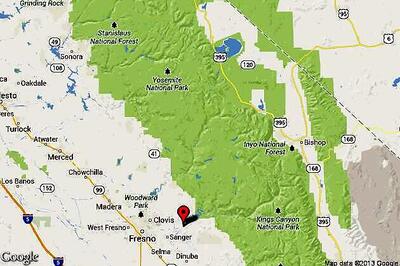
views
Can planets die? Science fiction storylines have always told us about planets being destroyed, but if a planet (in real life) dies, what happens of it? It is this that a global group of scientists appear to have found in TOI-849b, a massive exoplanet situated nearly 730 light years away, of which only its internal core appears to remain today. The study, now published in Nature, is the first of its kind that may help us better understand supergiant gaseous planets such as our very own Jupiter and Saturn, and the forces that led to the formation of such planets. In extension, this may help us get answers to the formation of planets from the early years of the universe.
The study is led by David Armstrong, a research fellow working on exoplanet characterisation via NASA TESS data at the University of Warwick, England. The Transiting Exoplanet Survey Satellite (TESS), a space telescope used by NASA and various researchers to detect and study exoplanets, was the first to spot and identify the TOI-849 solar system, supported by its G-type yellow dwarf star. In this system, scientists have now observed that the TOI-849b exoplanet is actually not the entire planet, but rather the what remains of it. In fact, it is just the remnant core of a gigantic planet that was once gaseous.
The reason why TOI-849b is a particularly curious case is because of its peculiar traits. The planet orbits its star in extremely close distance — 2.2 million kilometres. For reference, that's 1/67th the distance between the Sun and Earth. Because of this, it only takes 18.4 hours to orbit its star. Due to the proximity, it has a mean temperature of 1,526°C. Interestingly, its density is nearly the same as that of our very own planet, but at the same time, its mass is close to 40 times that of Earth. Despite this, planet TOI-849b is smaller in radius than gaseous giant planet Neptune, which is larger in size but has a mass of 17 times that of Earth.
The scientists state the mass of the remnant core of the dead planet is an anomaly, and may explain multiple things. Gaseous giant planets, during formation, are believed to have picked up gaseous matter and debris into its own atmosphere by virtue of its gravitational power, which in turn has a mass threshold. TOI-849b is said to have a mass well beyond the known threshold, due to which, instead of being able to add to its mass, and due to reverse gravitational pull coupled with the massive amount of heat because of proximity with the star, the planet may have undergone extreme mass loss through self-disruption of the heat.
They also state that the loss of the gaseous atmosphere may have happened due to possible collisions with other giant gaseous planets. As a result of the gases having escaped, TOI-849b is only left with the core of the planet in its near-origin form, which gives our scientists the unique opportunity to study the internal core and anatomy of a gaseous giant exoplanet. This is a rare phenomenon, since difficulty in access makes studying giant gaseous planets difficult, even more so with a core that may have remained largely untouched in chemical constituency. In fact, it is not yet known if there exists any other exoplanet that may exhibit similar properties as TOI-849b.




















Comments
0 comment